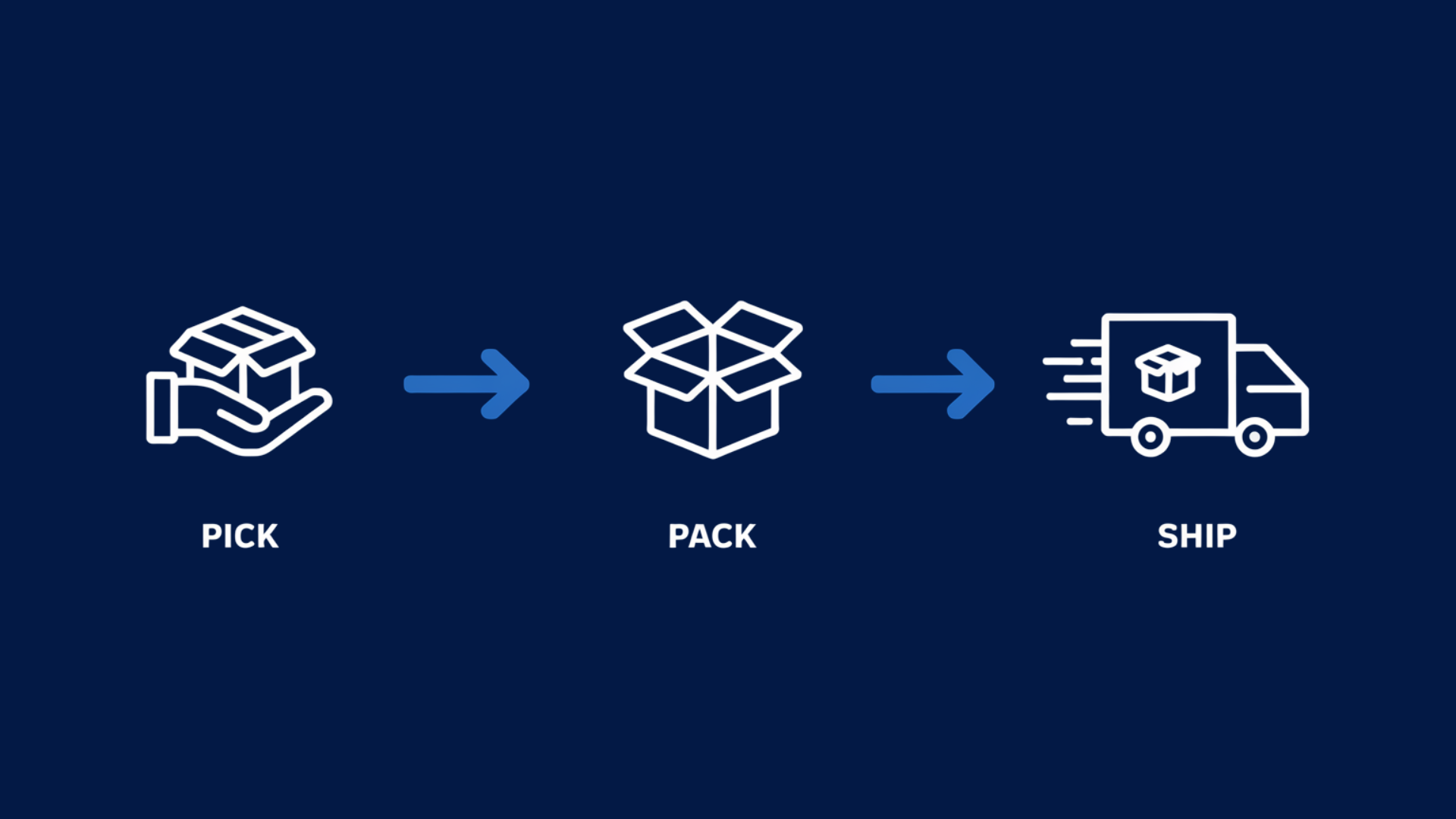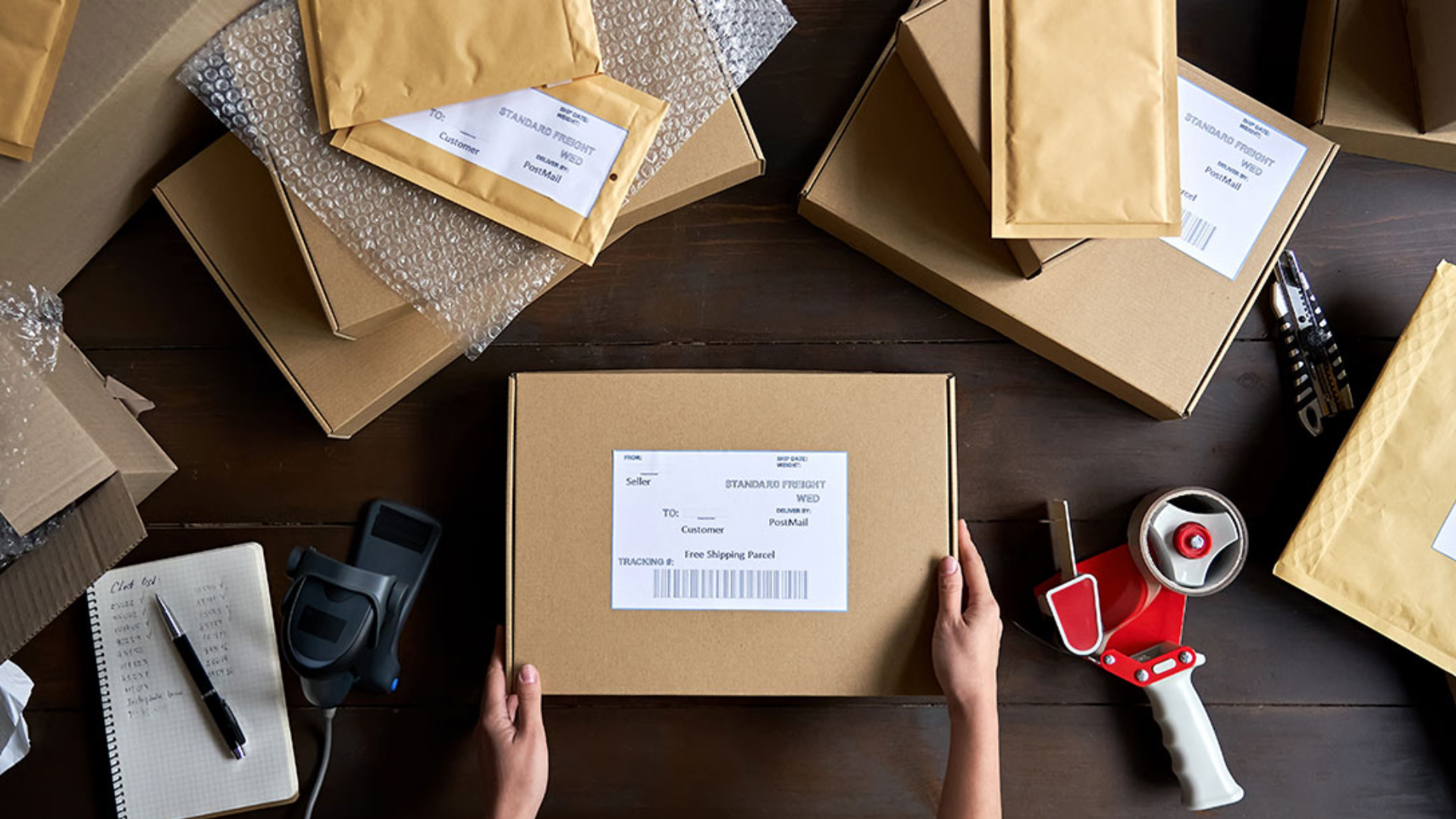When I first started learning about order fulfillment, the phrase pick, pack, and ship came up a lot.
At first, it sounded like industry jargon, but I quickly realized it’s actually a straightforward process that keeps online businesses running smoothly.
It’s the step-by-step method of taking a customer’s order, finding the right items in the warehouse, packing them securely, and shipping them out on time.
I like to think of it as the heartbeat of e-commerce – if this process is slow or messy, everything else suffers.
In this guide, I’ll break down what pick, pack, and ship means, how it works, and why it’s so important for businesses that want happy customers and repeat sales.
What is Pick, Pack, and Ship?

Pick, pack, and ship is a simple way to describe the core steps of order fulfillment.
When a customer places an order, the warehouse team picks the right items from storage, packs them safely into a box or envelope, and then ships the package out with a carrier.
It may sound basic, but this process is the backbone of online shopping. Without it, customers wouldn’t get their products on time or in good condition.
Businesses of all sizes, from small online shops to large ecommerce companies, depend on this method to keep orders moving quickly and accurately.
At its heart, pick, pack, and ship is about making sure the right product reaches the right customer at the right time.
Picking Strategies in Pick, Pack, and Ship Operations
Picking is the first step in the pick, pack, and ship process, and it’s all about pulling the right items from the warehouse shelves. The way this is done can make a big difference in speed and accuracy.
There are a few main strategies businesses use:
| Picking Method | How It Works | Best For |
|---|---|---|
| Single-Order Picking | One worker picks items for one order at a time. | Small businesses or low daily order volumes. |
| Batch Picking | Items for multiple orders are gathered in one trip. | Medium volumes with many similar orders. |
| Zone Picking | Workers are assigned to certain warehouse zones and only pick items in their area. | Large warehouses with wide product ranges. |
| Wave Picking | Orders are grouped and picked in scheduled “waves,” often based on shipping deadlines. | High-volume operations with strict cut-off times. |
Each method has its pros and cons, and the best one often depends on order volume, warehouse size, and the type of products being sold.
The End-to-End Process of Pick, Pack, and Ship
The pick, pack, and ship cycle is the foundation of fulfillment. Each step works together to make sure orders move smoothly from the warehouse to the customer’s doorstep.
1. Order Receipt and Processing
The process begins when a customer places an order online or through a store system. That order flows into the warehouse management system (WMS) so staff can see what needs to be picked.
At this stage, inventory is updated in real time to prevent overselling and backorders.
2. Picking the Products
Next, items are located in the warehouse. Workers or automated systems follow a picking strategy, such as single-order, batch, or zone picking, to gather the right products.
Accuracy is essential here because a mistake means delays and costly returns.
3. Packing for Protection and Efficiency
Once items are picked, they move to the packing station. The right box or envelope is chosen to fit the products securely.
Protective materials like bubble wrap or paper are added, and a packing slip is included. This step also considers cost-saving practices such as right-sizing packages to reduce shipping fees.
4. Shipping and Delivery
The final step is handing the packed order to a carrier. A shipping label is printed, the package is scanned into the system, and tracking details are shared with the customer.
Businesses often use multi-carrier shipping tools to compare rates and ensure the order arrives quickly and affordably.
Packing Best Practices for Efficient Pick, Pack, and Ship
Packing is more than just putting items in a box – it’s about protecting the products and keeping costs under control. A good packing process helps orders arrive safely while also saving money on materials and shipping fees.
- Choose the right box size: A box that’s too big wastes space and raises shipping costs, while one that’s too small risks damage.
- Use protective materials wisely: Bubble wrap, paper, or air cushions keep items secure without adding too much weight.
- Keep it organized: Include packing slips or labels inside so customers know their order is correct.
- Think about branding: Simple touches like custom tape or tissue paper can create a positive unboxing experience.
Efficient packing keeps customers happy, lowers costs, and reduces returns.
Benefits and Challenges of Pick, Pack, and Ship Fulfillment

This process is at the heart of smooth order fulfillment. It comes with clear benefits but also some challenges businesses need to manage.
Benefits
- Faster deliveries: Orders move quickly from shelf to customer.
- Higher accuracy: Reduces errors and wrong shipments.
- Cost savings: Efficient workflows lower labor and shipping costs.
- Customer satisfaction: Reliable fulfillment builds trust and repeat sales.
Challenges
- Seasonal spikes: Sudden demand can overwhelm staff and systems.
- Complex inventory: Large product ranges increase chances of mistakes.
- Labor costs: Manual processes require more workers and training.
- Returns management: Handling returns can slow down operations.
In-House vs. 3PL Pick, Pack, and Ship: When to Outsource
Managing fulfillment in-house gives businesses control, but it can become costly and complex as orders grow.
Partnering with a 3PL (third-party logistics provider) can save time and resources, but it also means giving up some control.
| Aspect | In-House Fulfillment | 3PL Fulfillment |
|---|---|---|
| Control | Full oversight of operations, staff, and quality. | Limited control; processes handled by the 3PL. |
| Costs | Higher fixed costs (labor, rent, equipment). | Variable costs; pay per order or storage used. |
| Scalability | Harder to scale quickly; requires more staff and space. | Scales easily with order spikes and seasonal demand. |
| Technology | Must invest in WMS, shipping tools, and integrations. | Many 3PLs provide advanced systems included in service. |
| Focus | More time spent on operations, less on business growth. | Frees time to focus on sales, marketing, and customers. |
Cost Breakdown in Pick, Pack, and Ship (and How to Lower It)
Running a pick, pack, and ship operation comes with several costs, but the good news is that there are simple ways to cut them down:
- Labor Costs: Biggest expense in fulfillment; lower costs by using batch or zone picking, cross-training staff, and adding barcode scanning for accuracy.
- Packaging Costs: Boxes, tape, filler; reduce waste with right-sized packaging, bulk purchasing, and eco-friendly materials that also boost customer trust.
- Shipping Costs: Carrier fees and dimensional weight; save money by comparing rates, negotiating contracts, and using multi-carrier software.
- Storage Costs: Rent, utilities, and warehouse space; optimize layout, slot fast-moving items closer, and manage inventory to avoid dead stock.
- Software Costs: WMS and shipping platforms; cut overlaps by choosing scalable tools that integrate with your sales channels.
Conclusion
Wrapping up, pick, pack, and ship is the core of efficient order fulfillment and a process every growing business needs to master.
From receiving orders to picking items, packing them safely, and shipping them out on time, each step plays a role in keeping customers satisfied.
A smooth workflow not only reduces errors but also lowers costs and speeds up delivery. While some companies manage it in-house, others find that outsourcing to a 3PL helps them scale with less stress.
I believe the key is finding the right balance of control, efficiency, and technology that fits your business needs.
When done right, pick, pack, and ship turns fulfillment into a competitive advantage instead of a daily challenge.















